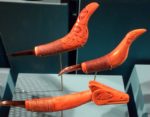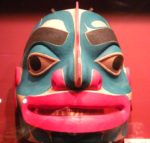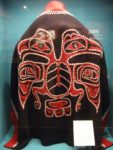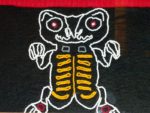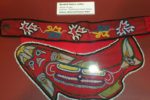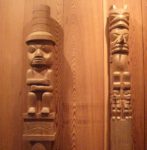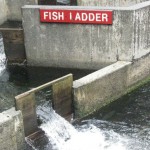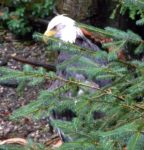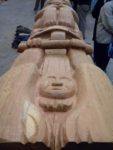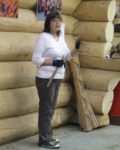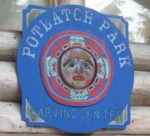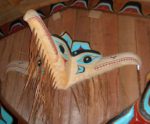Hello from Alaska. We finally made it to the shores of the state where I have longed to be for so long. The city of Ketchican wasn’t much prior to the cruise ship business and now it’s the first port of call and there was a perfect tour for us. It was rainy (over 90% of days in Ketchican are rainy) and chilly so our tour to a Native American culture center, salmon fish hatchery and eagle sanctuary was the best choice. The one surprise was the antique car collection at the culture center. These were the cars that made it to Alaska in the early 20th century. The totem poles and Tlingit artwork are among the most iconic designs of the Alaskan native people. We went to a replica of their Clan House and learned about the “Potlatch”. It’s a big family celebration, often including the raising of a totem pole. The family holding the Potlatch gains status by creating the greatest extravaganza. It’s an honor to go into debt doing so. Is this too reminiscent of a certain coming of age celebration, I ask? Anyway, we saw Alaska’s only female totem pole carver. She was a proud student of her family’s tradition especially since she is the first woman to do this. By the way, a totem pole for your back yard would run about $2500 per foot. The one she was working on was 50 feet – you do the math. From there we went to an eagle sanctuary and salmon fish hatchery. The eagles were so remarkable and so is their wing span. Hopefully Risa was able to give you a visual of that fact. The salmon hatchery is doing all it can to maintain the salmon population of Alaska. They release hundreds of thousands of salmon in the sea every year. Finally we got to the Totem Pole Center and saw more great examples of Native Alaskan artwork. One tidbit about the art. In order to make the paint that has survived many hundreds of years the women of the clan would mix the ore or minerals found in the earth to make the black, red and blue used in the paint with the oil from the salmon eggs. But the binding ingredient used to keep this mixture together was the mystery our guide asked us to solve. He said it was a substance peculiar to the women of the clan. That really had our imaginations going wild. After a few embarrassing guesses he revealed that it was the urine of the women. The abundance of the female hormones found in the urine gave the paint its longevity. Wild, huh?
